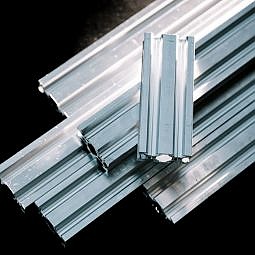
Do you have an upcoming project that requires bending aluminum parts? If so, you may want to consider aluminum extrusion bending as your chosen fabrication method. With its ability to create complex geometric shapes with accuracy and precision, aluminum extrusion bending is a highly versatile manufacturing process suitable for various applications.
Let's explore what you need to know about aluminum extrusion bending and its advantages.
Aluminum extrusion bending, also known as cold bending, is a fabrication method that involves forming metal sheets into complex shapes using a press brake. The aluminum sheet is heated to a specific temperature and clamped in the press brake. As you apply pressure from the top die of the press brake, the sheet bends to the desired shape.
The main advantage of aluminum extrusion bending is its ability to produce complex shapes with accuracy and precision. The press brake can form intricate curves, angles, and other geometric shapes that would be difficult or impossible to achieve with traditional methods, such as manual bending. Additionally, the process is relatively quick and cost-effective, making it ideal for larger projects. If you need to shape multiple parts, aluminum extrusion bending may be the best option for your project.
Aluminum is a lightweight, durable metal that's highly resistant to corrosion and rust. Additionally, it has excellent thermal insulation properties and can easily be recycled. Due to these characteristics, aluminum is an ideal choice for many bending or forming applications.
The type of aluminum alloy used in extrusion bending depends on the project's specific requirements. Typically, aluminum alloys such as 1100-H14 or 2024-T4 work well for bending projects. These alloys offer high strength and integrity while remaining malleable enough to be bent into complex shapes.
You must consider several factors when selecting an aluminum alloy for extrusion bending. First, determine the strength and durability requirements of the project and select an alloy accordingly. The type of environment in which the part operates will also need consideration. Some alloys offer better resistance to corrosion or rust than others. Additionally, it's important to consider the formability and malleability of the alloy. Certain alloys are better suited for bending than others, so select an appropriate material to form your desired shape.
Finally, consider your budget—aluminum is a cost-effective metal that provides excellent performance at a low price point. Choose an alloy that fits your budget yet still provides the strength, durability, and formability needed for the project.
When designing parts for extrusion bending, it's important to consider a few considerations. The part should bear the bend line in mind; make sure that the bend radius is within the capabilities of the press brake and that there are enough support points to ensure uniform deformation when bent. Additionally, account for spring back. When metal is bent, it will attempt to return to its original shape as it cools, which can affect the accuracy of the part. These design considerations can help ensure your aluminum parts achieve the desired result.
A cutting technique is typically best when using aluminum extrusion bending to create the desired features. Shearing and sawing are two common techniques that you can use to cut parts before forming. Shearing better suits simple, straight cuts, while sawing is more effective for straight and curved edges. Laser cutting and waterjet cutting are other options, though they are more expensive.
Aluminum extrusion bending is a safe process when you follow proper safety protocols. Always wear appropriate safety gear such as gloves, eye protection, and a face shield to protect yourself from shavings or other debris.
Keep the work area clean and clutter-free to prevent accidents and minimize the risk of injury. It's also essential to inspect all tools before use and ensure they are in good working order. You can enjoy a safe and successful bending project by following these safety precautions. When you perform aluminum extrusion bending correctly, you can produce parts with the highest quality and accuracy. Doing it wrong, however, can lead to costly mistakes.
There are a few tips to keep in mind to ensure your aluminum extrusion bending project is successful. Start by checking the part's dimensions. Ensure it meets all specifications and requirements before beginning the process. Next, use the correct tooling and settings for the job. Finally, inspect each part thoroughly after forming to guarantee accuracy and quality. By following these tips, you can be positive that your aluminum extrusion bending project is a success.
Aluminum extrusion bending offers many advantages for producing complex shapes, such as accuracy, precision, and cost-effectiveness. When selecting an alloy for the project, consider the strength and durability requirements, environmental conditions, and formability to ensure your parts are of the highest quality.
Additionally, consider elements such as bend lines and springs when designing parts for extrusion bending. By following these tips, you can be sure your aluminum parts will achieve the desired result.
With its performance and affordability, aluminum extrusion bending is an excellent choice for many fabrication projects. Take the time to understand the process and follow safety protocols to ensure your project succeeds. You can be sure that the versatility and quality of aluminum extrusion bending will be an excellent option for whatever your application may be.
If you're working with Bosch aluminum profiles and extrusions, A-Line Automation stocks high-quality t-slot aluminum framing in various sizes and shapes to suit your project needs. Our aluminum frames are designed for easy assembly, allowing you to quickly assemble your projects without worrying about complicated tools or hardware. With our t-slot aluminum framing, you'll be able to construct complex parts with ease and accuracy. Try A-Line Automation for all your aluminum extrusion bending needs.